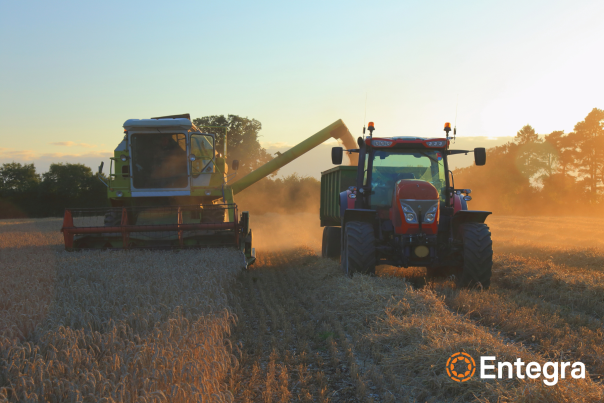
With inflationary pressures, adverse weather patterns, global supply chain disruption and evolving consumer expectations all converging, managing food and beverage budgets has become a strategic challenge.
This summer’s Food & Beverage Market Trends Report from Entegra reveals just how multifaceted those challenges have become and how essential it is for caterers to plan with both precision and flexibility.
A Triple Threat: weather, labour and logistics
From hospital kitchens to school dining halls, menu planning begins with supply certainty. But this season, that certainty is under strain.
Lettuce and leafy greens are seeing near unsustainable production costs in the UK, forcing many suppliers to source from Europe. Root vegetables are also under pressure, as potato planting has declined by 12% due to rising costs and seed shortages, and inconsistent yields are affecting crops like carrots and parsnips.
At the same time, Red Sea shipping delays are disrupting the flow of fresh imports such as tomatoes and peppers from North Africa and Turkey. Even domestically, production is vulnerable to rising energy and labour costs, particularly in controlled-environment agriculture.
Protein pressures continue
Animal protein markets are facing sustained volatility. GB beef prices now exceed 700p/kg, with no short-term relief in sight due to tight domestic supply and firm global demand. Poultry production in Poland, a major supplier to the UK, is down 20% following avian flu control measures, while UK turkey volumes have dropped by 30% year-on-year.
Even typically stable categories like pork are beginning to feel the pinch, as consumers shift from beef and lamb to more affordable alternatives, driving up demand.
Seafood faces structural strains
In seafood, structural issues are surfacing. Salmon remains in high demand but is battling disease-related mortality and high production costs. Cod and haddock are climbing in price due to quota reductions in the Barents Sea and Northern Shelf, while sustainability-driven shifts in the market for species like hake are also nudging prices upward.
What this means for public sector caterers
The implications are clear: flexibility, foresight and responsiveness are no longer optional – they’re critical. For many public sector organisations, the opportunity lies in taking a more strategic approach to procurement. That means aligning menu development with market intelligence, diversifying supply routes, and looking ahead to spot where cost spikes may emerge before they hit the invoice.
This season’s data also highlights the importance of supplier relationships that go beyond transactional buying. Trusted partners can provide access to broader sourcing networks, support regulatory compliance and offer solutions that adapt to your service model and financial constraints.
Procurement as a strategic lever
By treating procurement as a lever for value, not just cost savings, public sector caterers can navigate inflationary waters while protecting both quality and sustainability standards. The right frameworks can make that process easier.
One example is the Crown Commercial Service’s Buying Better Food and Drink framework, which supports public sector buyers with a compliant, flexible and insight-driven approach to procurement. This framework significantly streamlines decision making, lowers risk, and offers continuous expert support – valuable advantages in today’s complex market.
There’s no doubt that summer 2025 presents a challenging outlook for food and beverage sourcing in the public sector. But with challenge comes opportunity. Informed, agile procurement strategies can turn complexity into confidence, ensuring public institutions continue to deliver high-quality, cost-effective meals across the communities they serve.